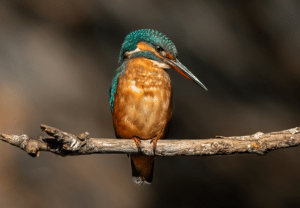By: MARGARET BROWN
TWO WEEKS ago, when a British Airways 747 clipped wing tips with a Sri Lankan Airbus 340 while taxiing fully loaded at Heathrow, my sympathy was for the pilots as well as the passengers, the airport being inadequate for the amount of traffic handled each day.
Having investigated further, it seems that much the same happened in July of this year when a BA 777 preparing to leave for Washington DC backed into an Airbus 321. While no one living beyond the perimeter is in favour of enlarging the airport, minor accidents are likely to increase in number until something serious happens.
When I was a driver stationed at RAF Harwell near Oxford back in 1944, I snapped off the wing tip of a newly repaired Spitfire, a Court Marshall offence during wartime. The planes were lined up herringbone fashion there for two flights to be ready for take-off, leaving just room enough for me to drive my lorry up the middle.
Being in a hurry, I took the zig-zag route rather too fast, misjudged my distances and the damage was done. I would have been in real trouble had I not cut myself on a mangled piece of Duralumin. After a blistering dressing down, I crept to sick bay under the angry eyes of the flight mechanics. I wonder who will take the rap after the Heathrow incident and if it will be made public.
Watching gannets arrive in their hundreds on a small rock at breeding time without collision, each pair occupying the same nesting site year after year and defending their nests against intruders while rearing a single chick, the colony appears to be much better organised than Britain’s premier airport.
Not only that but to date, although birds in general do not have the same speed and killing power as manmade flying machines, they have a delicacy and control beyond imitation. The same might be said of winged insects, the acrobats of the air. They hover, fly backward then buzz off from a stationary start and disappear. The closest we can manage is a Harrier Jump Jet, Helicopter or Autogyro, all of which burn fossil fuel and are excellent if noisy killing machines.
Short honeymoon
Praying mantids, or mantises, close relatives of the cockroach by stealth and in silence, seek their prey either dressed in camouflaged to blend with their surroundings or in full view like statues, until something edible comes into view.
The male flies and hunts mostly at night but can be seen any time during the breeding season when seeking a mate. Having impregnated his much larger spouse of no more than a couple of hours he is loath to dismount, as by instinct, he is aware that unless extremely lucky, the short honeymoon will end in cannibalism starting from his head downward.
Once fertile, the female lays
 ‘A large female praying mantis fell at my feet the other day when I opened the office door’ |
several batches of up 100 eggs, each clutch housed in a separate container attached to twigs or other surfaces. After about three months, they change from eggs to grubs to small nymphs. Those that hatch first munch their way through late developing siblings and this continues until one extremely well-fed young praying mantis breaks out of the cocoon.
A large female praying mantis fell at my feet the other day when I opened the office door. She was about four inches from head to the sensors on her tail, and judging from the girth of her belly she looked ready to lay her eggs. Having a life span of only 14 months, it is to be hoped a few of her offspring live long enough to ensure another generation.
If it is in danger of extinction, survival of a species is ensured by over production in order that one or two progeny may live long enough to breed successfully. For millions of years, the process appears to have maintained a balance both in the face of natural disaster and in the relationship between predator and victim.
Then mankind appeared on the earth and as more scientific work is carried out, there is less certainty about our origins. The accepted theory that we evolved from primates is now under close scrutiny because many links are missing in the chain and some of the acclaimed facts have been proved fraudulent.
A relic
Another idea is that the human race resulted from mutation and genetic change to the basic tree of life, or then again we may be the product of a creator/designer. Whatever our origins, since discarding hunter-gathering in favour of farming and then to industrialisation, our numbers have increased to such an extent that the natural balance of the environment has been upset.
Such problems impinge little on the pleasure of an autumn day in Algarve but one morning, as we enjoyed our coffee beside Lagos marina at peace with the world, a relic from the past reached out to cast a chill.
We were told that Hitler’s old yacht was tied to one of the pontoons and after a short search we think we found her. The rust streaked wooden hull and deck, dirty sails draped higgledy-piggledy over the boom and dull grey spars suggested 60 years of neglect. With the high cost of marina fees, the old tub must have an owner or owners somewhere who perhaps may be hoping to cash in on her past history when the time is ripe.
























